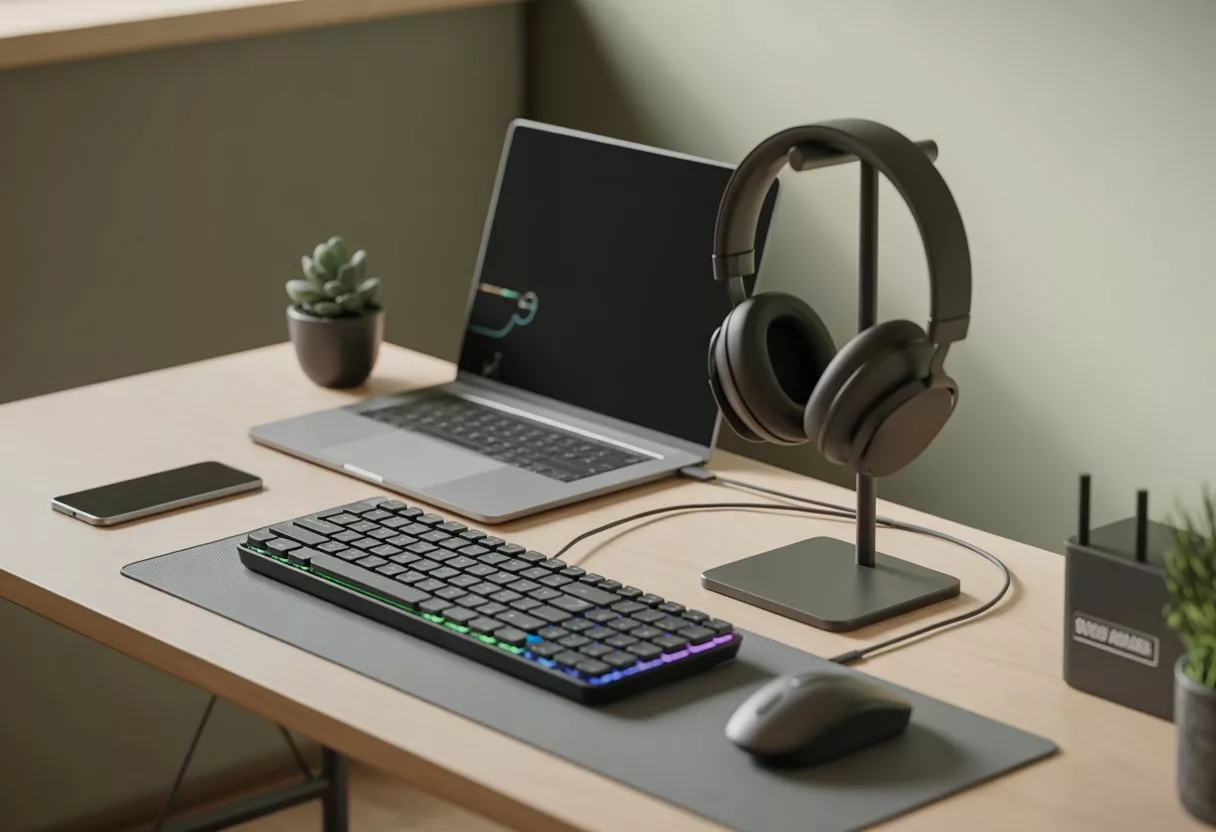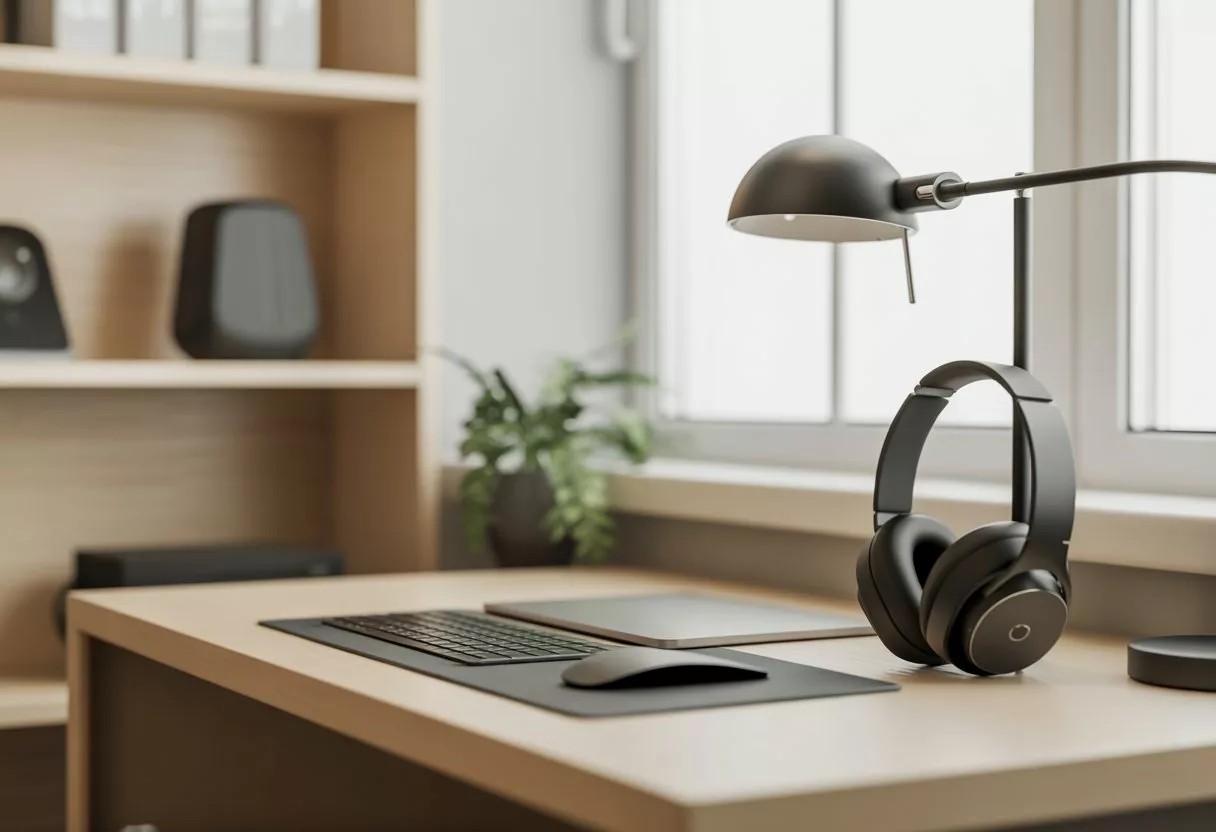Choosing budget tech in 2025 doesn’t mean sacrificing performance. These days, you can get surprisingly reliable devices without emptying your wallet.
Affordable gear is fast enough for remote work, school, or even creative side projects.

It’s all about knowing what to look for and making smart, informed choices. The tech keeps getting better, so you don’t have to settle for less.
Key Takeaways
- Budget tech in 2025 offers strong performance for many needs
- Smart shopping helps you avoid overpaying for features you don’t need
- It’s possible to get high value without spending a lot
Why Sticking To Your Budget Doesn’t Mean Settling

Going for affordable tech in 2025 can still get you where you need to go. Smart buying means you’re getting reliable performance and not overspending.
Match your choices to what you actually need, and you’ll get more value for your money. Here’s what you get out of it:
- More for less: Modern budget tech offers advanced features
- Better ROI: Each purchase meets practical needs
- No compromise: Lower prices no longer mean poor quality
Want to dig deeper? Businesses are getting creative with ways to stretch their IT budgets too.
Budget Tech Essentials: Smart Buying Strategies

Start with a clear budget and spend some time researching. Don’t just grab the cheapest thing—look for enough RAM, a half-decent processor, and storage that won’t fill up in a week.
Brands with a history of solid updates and support are worth the extra glance. Make a quick list of your “must-haves” and see which models actually deliver.
It’s tempting to skip on performance or durability, but spending a little more up front can save you headaches down the road.
| Check Before You Buy | Why It Matters |
|---|---|
| RAM & Processor | Speed for multitasking |
| Storage | Room for apps and photos |
| Brand Support | Longer software updates |
| Matches Your Needs | No money spent on unused features |
Need more advice? There are thorough budget planning guides for 2025 and plenty of tested affordable tech picks out there.
Best Budget Laptops: Choosing Between Chromebook and Windows
Chromebook Value and Performance
If you just want something simple and dependable for web stuff, Chromebooks are hard to beat. They boot up in seconds, don’t need much maintenance, and viruses are less of a headache.
For email, Google Docs, or online classes, a Chromebook’s a solid budget choice.
Benefits:
- Boots in seconds
- Good security features
- Small price tag for basic tasks
Drawbacks:
- Mostly depends on an internet connection
- Fewer apps if you need something outside the Google suite
Here’s a quick view:
| Feature | Chromebook |
|---|---|
| OS Speed | Very fast |
| Price | $250–$300 |
| Best for | Web, email, docs |
Windows Laptop Flexibility and Power
Need more freedom in what you install? A budget Windows laptop is the way to go. You can run most business apps, school software, or get creative with more tools.
They’re easier to upgrade too, at least for things like storage or RAM.
Benefits:
- Runs most business, school, and creative software
- Easier to add extra storage or memory
Drawbacks:
- Needs antivirus and regular updates
- Cheapest models can lag with heavy tasks
Look for something in the $350–$500 range, with at least 8GB RAM and an SSD. Want a shortlist? Check out the best cheap Windows laptops right now.
Smartphones Under $300: Premium Power on a Tight Budget
Phones under $300 can do a lot more than you’d think. Look for at least 4000mAh battery—no one likes scrambling for a charger at 4 p.m.
A mid-range processor like Snapdragon 680 or MediaTek Helio G88 will keep things running smoothly for most daily stuff.
Some top picks:
| Model | Highlights |
|---|---|
| Samsung Galaxy A14/A25 | Steady updates, reliable hardware |
| Motorola G Power Series | Long battery life, simple software |
| OnePlus Nord N200/N300 | Good performance for the price |
Always check how long you’ll get software updates and what kind of warranty comes with your phone. For more, see the best phones under $300 and best budget Android phones lists.
Essential Budget Accessories Under $50
Accessories can make or break your daily tech routine. Here are some solid, wallet-friendly picks:
- Reliable charging gear: Fast chargers and sturdy cables for safer, quicker power-ups.
- Portable power banks: Go for at least 10,000mAh—great for travel or blackouts.
- Durable protection: Good cases and screen protectors save you from disaster drops.
- Compact Bluetooth accessories: Wireless keyboards and mice are a lifesaver for tablets or cramped laptops.
Want more ideas? Here’s a handy list of tech gifts and a CNET guide to budget tech accessories that won’t break the bank.
Powerful Free and Affordable Software (2025 Picks)
Top Tools for Getting Work Done
Productivity doesn’t have to cost a thing. Free tools like Notion for project tracking, LibreOffice for docs and spreadsheets, and Google Workspace for collaborating are all solid bets.
They’re easy to use, and you can organize, create, and share without fuss.
| Tool | Purpose | Price |
|---|---|---|
| Notion | Notes, tasks, databases | Free/Freemium |
| LibreOffice | Document editing | Free |
| Google Workspace | Collaboration | Free/Freemium |
Best Security and Privacy Solutions
Keep your info safe without spending a fortune. Bitwarden handles passwords, Proton VPN keeps your browsing private, and Malwarebytes Free does a solid job catching malware.
- Bitwarden – Password management
- Proton VPN – Safe and private web access
- Malwarebytes Free – Malware and virus scans
Free Apps for Design and Editing
Need to get creative? Photopea is great for image edits, Canva makes design a breeze, and DaVinci Resolve is surprisingly powerful for video work.
Some of these even have basic generative AI features to speed things up.
Smart Tips for Buying Used Tech
Used or refurbished electronics can save you a ton—often 30-50% off new prices. Platforms like Swappa, Decluttr, and Best Buy’s Refurbished Program are worth checking out.
Pay attention to seller ratings, product condition, and whether there’s a warranty. Used tech is better for the environment and can land you a higher-tier device for less.
But, there’s always a risk of shorter lifespans or limited support.
Quick checklist:
- Verify warranty
- Review return policy
- Inspect for damage
- Confirm tech compatibility
Avoid These Common Budget Tech Mistakes
Don’t let these trip you up:
- Paying for extra features: Only choose tools that fit your business needs
- Choosing old or unsupported technology: Check that devices and software are current and still receive updates
- Overlooking warranties: Always pick products that include a warranty or a return policy for safety
Pro Tips for Smarter Tech Shopping
- Track prices with tools like Honey, CamelCamelCamel, or Google Shopping. These help you spot when discounts are actually real, not just marketing tricks.
- Shop during big sale events—think Black Friday, Cyber Monday, or even back-to-school season. That’s when you’ll catch the best deals, if you’re patient.
- Whenever possible, pick software that lets you pay once instead of roping you into an endless subscription. It’s usually a better deal in the long run.
- Sign up for store newsletters and deal alerts. It’s a little annoying, but sometimes you’ll catch a flash sale you’d never know about otherwise.
Frequently Asked Questions
Which Parts Do You Need for an Affordable but High-Performance PC in 2025?
Building a budget PC in 2025? Choose your parts with care. Go for a recent-gen processor that gives you good value and at least 16GB of RAM.
Pick a mid-range graphics card—new or gently used, whatever stretches your dollars further. An SSD is a must for quick boot times.
Don’t overspend on the power supply; just make sure it’s reliable. A simple case with decent airflow does the job.
| Component | Recommendation |
|---|---|
| CPU | Latest budget model |
| RAM | 16GB DDR4 or DDR5 |
| Storage | 512GB+ SSD |
| GPU | Mid-range, new or used |
| Power Supply | 80+ Bronze certified |
| Case | Simple with airflow |
How Do You Set Up a Home Office With Affordable Tech?
For a comfortable workspace, start with a full HD monitor and an ergonomic chair. A basic keyboard and mouse combo is fine, but don’t skimp on comfort.
If you’re in a lot of video calls, grab a decent webcam. Stick with free or budget-friendly productivity software where you can.
Honestly, a strong Wi-Fi router is underrated—it’ll save you so much hassle with dropped calls or slow downloads.
Which Budget Gadgets Give You the Most Value in 2025?
There’s a ton of value in wireless earbuds, portable SSDs, and compact Bluetooth speakers. Smart plugs are handy too, and not just for the tech-obsessed.
Wireless keyboards, mice, and updated fitness trackers can make daily life smoother. If you want more ideas, check out these budget gadget guides—they’re surprisingly helpful.
What Are the Top Ways to Stick to Your Tech Budget in 2025?
Want to avoid blowing your budget? Compare prices, hunt for sales, and don’t overlook refurbished or open-box items.
Make a list of priorities before you shop. Only upgrade what really matters, and keep an eye on your spending—nobody likes surprises on their credit card.
Experts suggest setting limits and tracking purchases. Not always fun, but it works. There are more tips in these tech budgeting strategies.
How Has Budget Tech Changed With 2025 Advances?
Budget tech in 2025 is honestly kind of impressive. Entry-level hardware delivers more power than you’d expect, and smart home gear isn’t just for big spenders anymore.
Cloud-based software is way more common now, so there’s less pressure to drop a ton of cash upfront. It’s a good time to be shopping on a budget, honestly.
What Extra Costs Should You Watch for in a Low-Cost Tech Setup?
Be prepared for things like software licenses, cables, and adapters. Shipping fees can sneak up on you too.
Sometimes, accessories or warranties will quietly pile onto your total. If you go for subscription-based software or cloud services, those monthly charges might not be so obvious at first.
